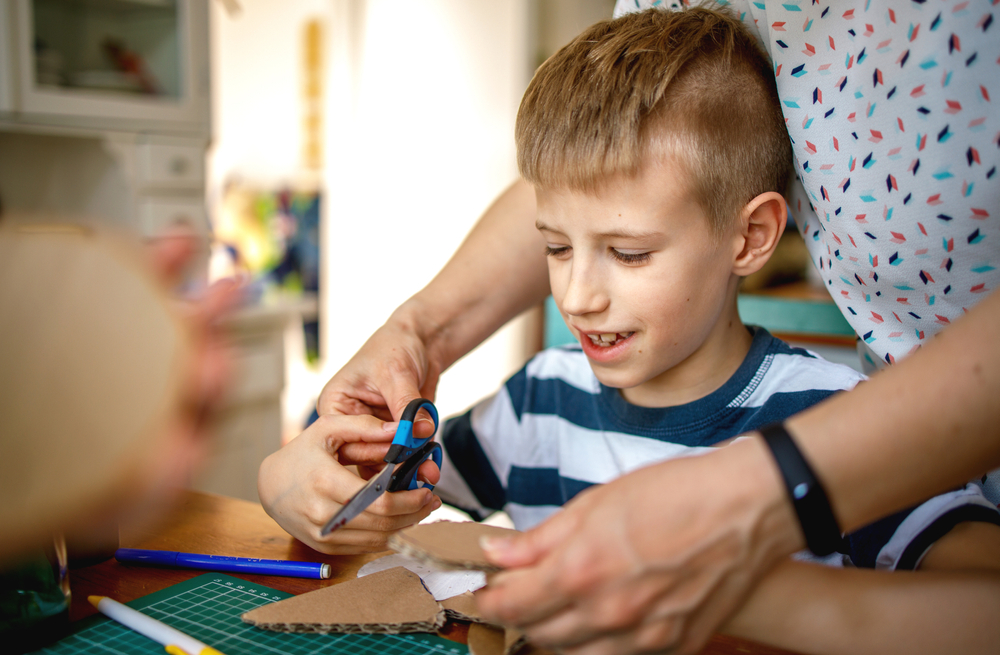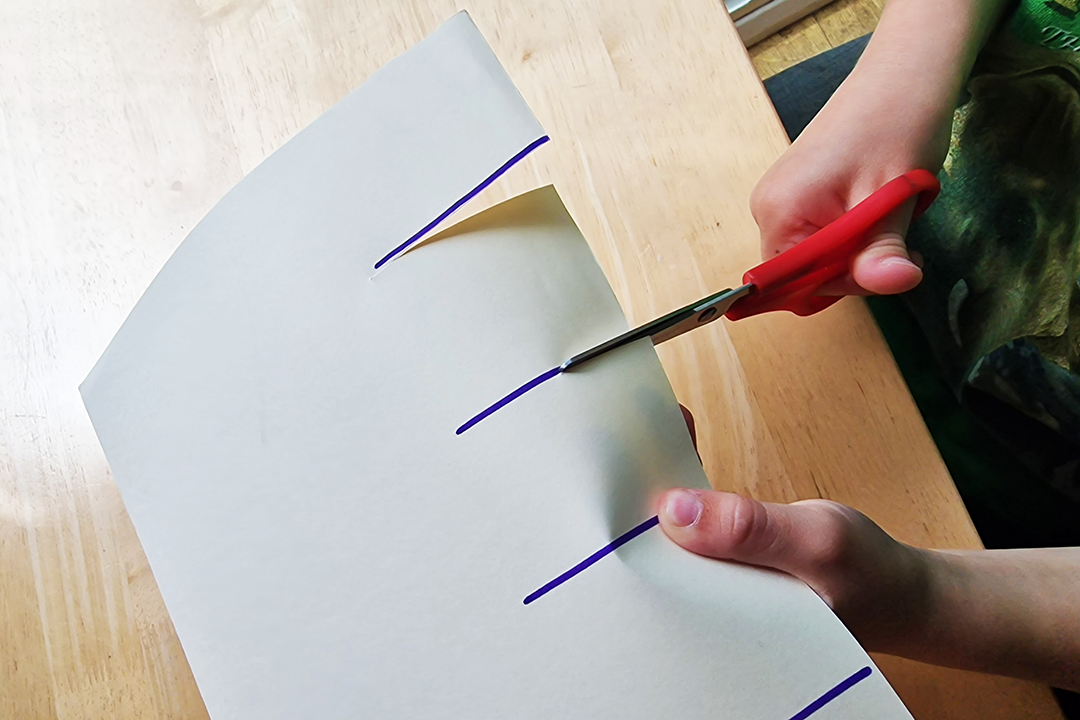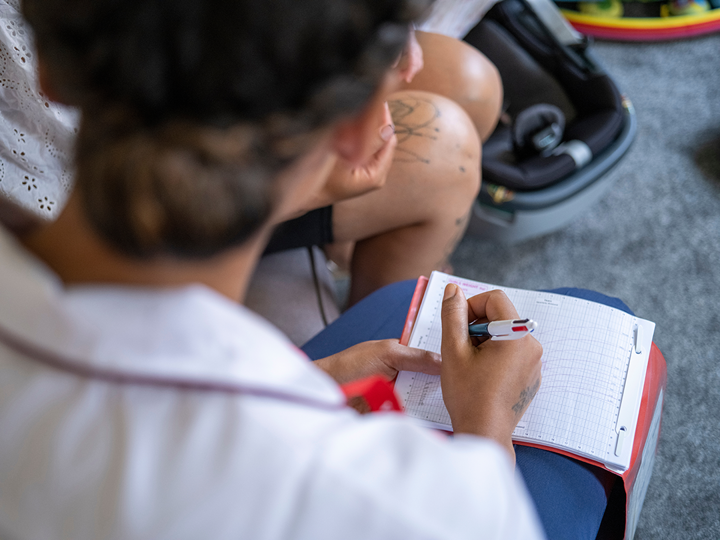Supporting your child's scissor skills
- 1-5 Years
- 5-11 Years
- SEND
- Child development and growing up

Using scissors can be difficult for some children. You will need to ensure that the scissors are appropriate for your child. They need to be sharp enough to cut the material you are using or it will be a frustrating experience for everyone. Remember children need supervision when using scissors.
Explore the topics on this page:
Types of scissors
Some children find using standard scissors hard. There are different types of scissors available that can make holding and scissors easier. It can also help improve their speed and accuracy when cutting.

Supported snipping
Some children can struggle to hold the paper and use the scissors at the same time. Supported snipping helps your child use the scissors and build up their confidence.
To help support your child, gently hold place your hand over the hand they are holding the paper with. This helps stabilise the paper so they can cut using the scissors.
When you feel your child is confident holding the paper themselves, you can let you and let them cut the paper by themselves.

Activities to support scissor skills
There are lots of different craft activities that can help support your child's scissor skills.
Encourage slow and careful cutting. If your child struggles to cut slowly, show off the speed you want them to cut. You can do this by slowly tracing a finger over the line, then asking them to cut at the same speed. You can also demonstrate the speed by putting your hand over theirs on the scissors and cutting at a slow speed.
Use different ways to encourage them to cut along different lines:
- Cutting along thick lines
- Cutting between lines
- Cutting between objects stuck onto paper like lolly sticks or pipe cleaners.
- Cutting along lines that become thinner and thinner
Cut and stop. Draw thick and narrow lines across the paper. Stop the lines before the end of the paper. Use a sticker as a reminder to stop cutting.
Watch a video demonstration about cutting paper with scissors

Have you tried looking at our general advice?
You may want to look at our general advice page.
Last reviewed: 1 November, 2024





